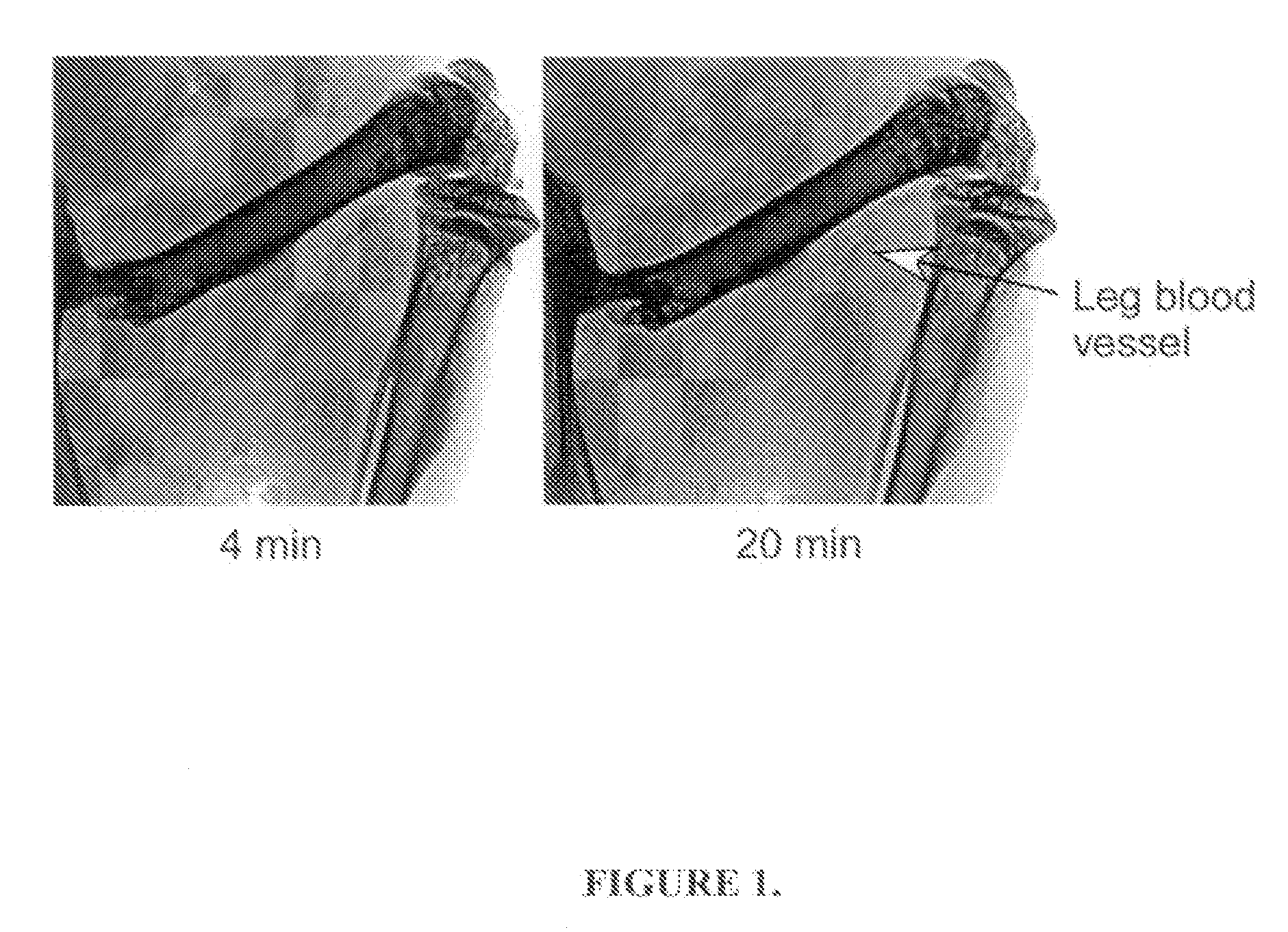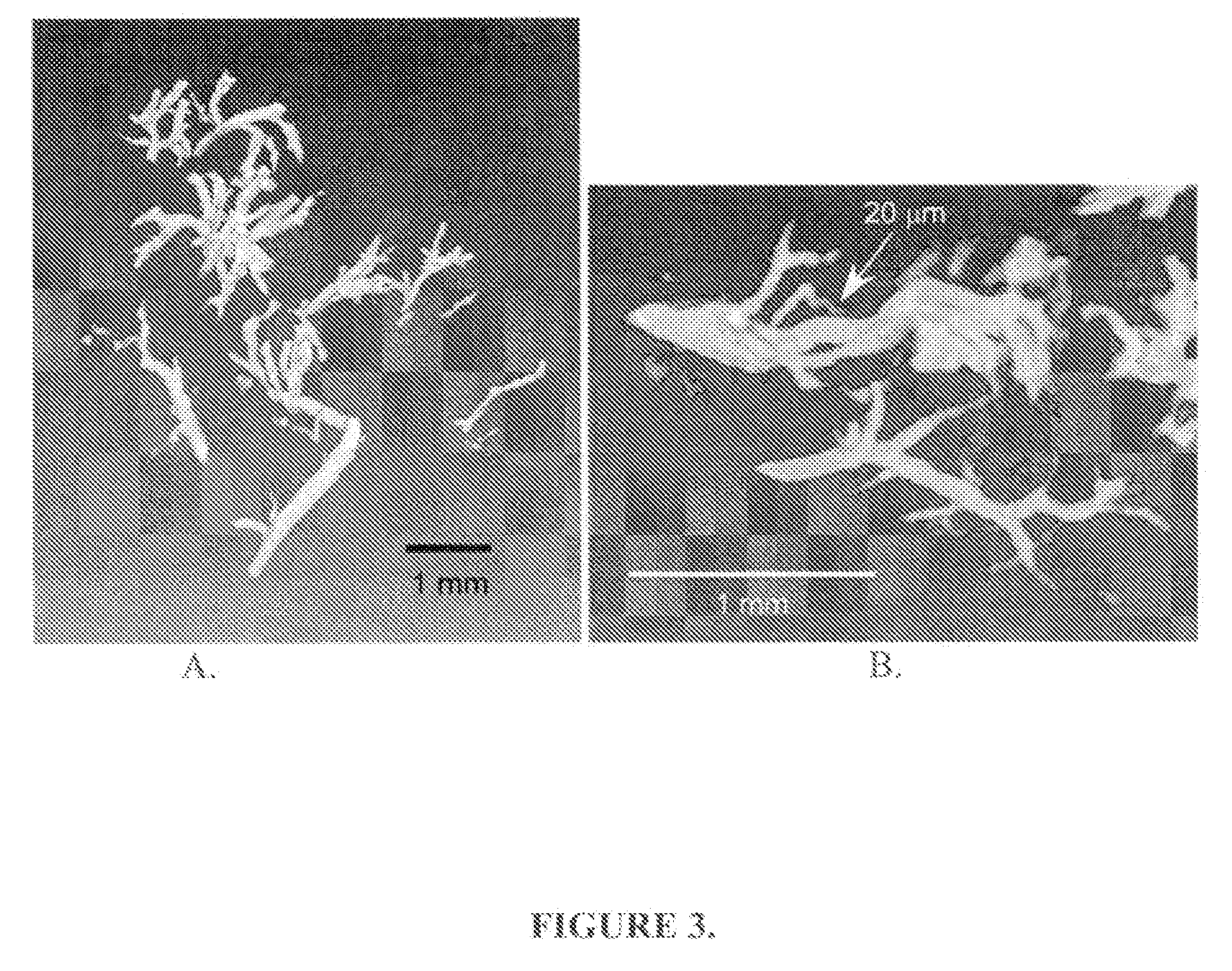Functional associative coatings for nanoparticles
a technology of nanoparticles and associative coatings, which is applied in the field of coated nanoparticles, can solve the problems of limited use of nanoparticles and their stability, and achieve the effect of optimizing the properties of bilayer coated nanoparticle compositions quickly and efficiently
- Summary
- Abstract
- Description
- Claims
- Application Information
AI Technical Summary
Benefits of technology
Problems solved by technology
Method used
Image
Examples
example 1
Coating a 15 nm Gold nanoparticle
[0337]Colloidal gold nanoparticles with a diameter of about 15 nm were prepared by mixing 100 mL of boiling water with 1 mL of 1% aqueous HAuCl4 and 3 mL of 1% aqueous sodium citrate and heating the mixture for 15 minutes. A red solution developed and analysis by electron microspray indicated that 15 nm gold nanoparticles had formed. Dodecanethiol (the surface binding molecule) was diluted 1:100 in ethanol. The surfactant Tween® 20 (the amphiphatic molecule) was diluted 1:100 in ethanol. 10 microliters of the dodecanethiol solution was mixed with 20 microliters of the Tween® 20 solution followed by the addition of 0.4 mL of the 15 nm gold solution. After 10 minutes, the coated nanoparticles were purified from excess ligands by centrifugation to pellet the gold particles. The supernatant was removed and the gold pellet that was isolated were resuspended in water and the process of centrifugation was repeated 3 times. The coated gold nanoparticles were...
example 2
Stabilization of 40 nm Gold Nanoparticles
[0339]Large gold particles, with a size greater than about 40 nm, tend to be difficult to stabilize. However, coating of the gold particles with dodecanethiol (surface binding molecule) and Tween® 20 (amphiphatic molecule) resulted in exceptionally well stabilized particles.
[0340]Colloidal gold nanoparticles with a diameter of about 40 nm were prepared by citrate reduction of chloroauric acid in boiling water. Dodecanethiol was diluted 1:100 in ethanol. Tween® 20 was diluted 1:100 in ethanol. 10 microliters of the dodecanethiol solution was mixed with 20 microliters of the Tween® 20 solution followed by the addition of 0.4 mL of the 40 nm gold solution, and the mixture was mixed for 10 minutes. The coated gold nanoparticles were purified from excess ligands by centrifugation to pellet the gold particles. The supernatant was removed and the pellet was resuspended in water and the process of centrifugation was repeated 3 times.
[0341]The dodecan...
example 3
Synthesis and Simultaneous Coating of 2 nm Gold Nanoparticle
[0342]Dodecanethiol was diluted 1:100 in ethanol. The surfactant Tween® 20 was diluted 1:100 in ethanol. 10 microliters of the dodecanthiol solution was mixed with 80 microliters of the Tween 20 solution. 200 microliters of water was added, followed by 4 microliters of a 25 mg / mL solution of HAuCl4 dissolved in ethanol. After mixing, 4 microliters of a 2 mg / mL solution of NaBH4 solution in ethanol was added. The solution turned brown. 4 microliters of a 1 N aqueous solution of NaOH was added followed by 4 microliters of the borohydride solution resulting in a darker brown solution. After several minutes an additional 8 microliters of the borohydride solution was added. Electron microscopy showed that the gold nanoparticles that were formed had a diameter about 2 nm. The coated gold nanoparticles were stable in I M NaCl and stable upon boiling. When centrifuged in a 100,000 molecular weigh cutoff concentrating filter, the pa...
PUM
| Property | Measurement | Unit |
|---|---|---|
| diameter | aaaaa | aaaaa |
| diameter | aaaaa | aaaaa |
| diameter | aaaaa | aaaaa |
Abstract
Description
Claims
Application Information
 Login to View More
Login to View More - R&D
- Intellectual Property
- Life Sciences
- Materials
- Tech Scout
- Unparalleled Data Quality
- Higher Quality Content
- 60% Fewer Hallucinations
Browse by: Latest US Patents, China's latest patents, Technical Efficacy Thesaurus, Application Domain, Technology Topic, Popular Technical Reports.
© 2025 PatSnap. All rights reserved.Legal|Privacy policy|Modern Slavery Act Transparency Statement|Sitemap|About US| Contact US: help@patsnap.com



